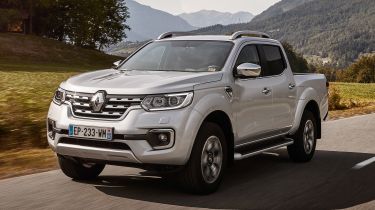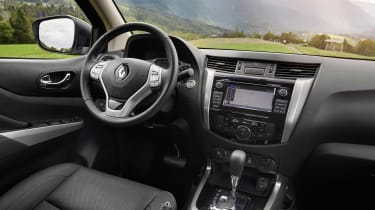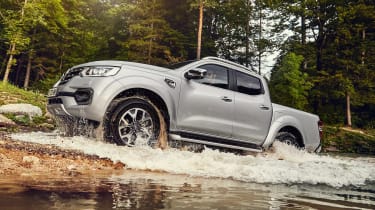New Renault Alaskan 2017 review
Renault has joined the pick-up truck fray with the Alaskan, but what's it like from behind the wheel? We find out...

It's little more than a badge engineering exercise, but the Renault Alaskan has taken the underpinnings of what is already a well proven pick-up in the Nissan Navara. Unique front styling and the option of a hard-top for the cargo bay will add to the Renault’s appeal, while the choice of two engines and good on-road manners give pick-up buyers reason to take notice.
Renault has never had a dedicated model in the pick-up class, but the Alaskan is the vehicle to change that, as the French manufacturer joins a host of newcomers in the one-tonne pick-up market.
It’s a segment that accounts for more than 4.5 million sales globally, and although Europe makes up just three per cent of this, sales are growing.
The Alaskan goes up against established rivals like the Toyota Hilux, Mitsubishi L200 and Ford Ranger, and it shares its platform with the Nissan Navara and forthcoming Mercedes X-Class. But the Renault’s UK launch has been delayed, and while official timings can’t be confirmed, it’s looking like first deliveries will arrive in March 2018.
It’s too early for Renault UK to confirm exact specifications for the Alaskan, either, but its Nissan sibling can provide some clues as to what’s to come. Standard models are likely to feature 16-inch alloy wheels, a five-inch touchscreen display and a reversing camera that’s integrated into the tailgate. Moving further up in the range will bring a seven-inch screen with DAB radio and smartphone connectivity.
Used - available now

2024 BMW
M3
29,000 milesAutomaticPetrol3.0L
Cash £49,850
2025 BMW
iX
81,249 milesAutomaticElectric
Cash £26,272
2022 BMW
i3
33,096 milesAutomaticElectric
Cash £14,032
2025 Toyota
Yaris Hybrid
26,859 milesAutomaticPetrol1.5L
Cash £14,935A second five-inch TFT display between the dials displays a variety of information, including turn-by-turn navigation. Electric leather seats add comfort, while rear parking sensors and 360-degree parking cameras boost visibility. Unfortunately, the steering wheel is only adjustable for height, not reach.
Passenger space in the rear is reasonable, and unlike some pick-ups, the seatbacks are set at an angle rather than being fixed upright. There is still a tall transmission tunnel for middle-seat occupants to contend with, but overall, head and knee room don’t give much cause for complaint. There are 20 storage areas dotted throughout the cabin, but considering that some buyers will use this as a mobile office, few of these are large enough for items like folders or paperwork.
The payload area is rated to carry up to 1,059kg, and there are five tether points to help tie down items, too. Renault will offer a clip-on roof section as an accessory.
Buyers get a choice of 158bhp or 187bhp Renault-developed 2.3-litre four-cylinder diesels. Both are mated to a six-speed manual, with a seven-speed auto available, too, and both versions can tow up to 3,500kg.
All Alaskans come with selectable four-wheel drive and a diff lock. Conventionally it runs using the rear wheels, with the ability to switch to four-wheel drive at up to 62mph. Low-range can be selected when in neutral.
Built on a solid box-frame chassis, the Renault eschews the usual leaf-spring rear suspension set-up found in pick-ups in favour of a five-link arrangement. By doing so, the ride quality is improved, with or without a load. It’s never going to give you SUV comfort, but it’s civilised enough.
The 187bhp engine has sufficient grunt to get it up to speed in a timely fashion. However, the auto box we tried did tend to hang on to each gear that bit longer when accelerating, and can feel quite laboured as a result. Wind noise around the door mirrors does pick up as you cruise past 65mph, too.
The steering, while not overly assisted, is vague. Threading the Alaskan through a series of bends at any brisk pace requires strict attention, as the body rolls from side to side. This applies to most pick-ups, though, and the Alaskan redeems itself around town with a respectable 12.4-metre turning circle.
Being a workhorse by nature, the Renault proves to be capable when you head off road. In soft mud it can make steady progress in its low-range gears, while Hill Descent Control helps on steep slopes.










